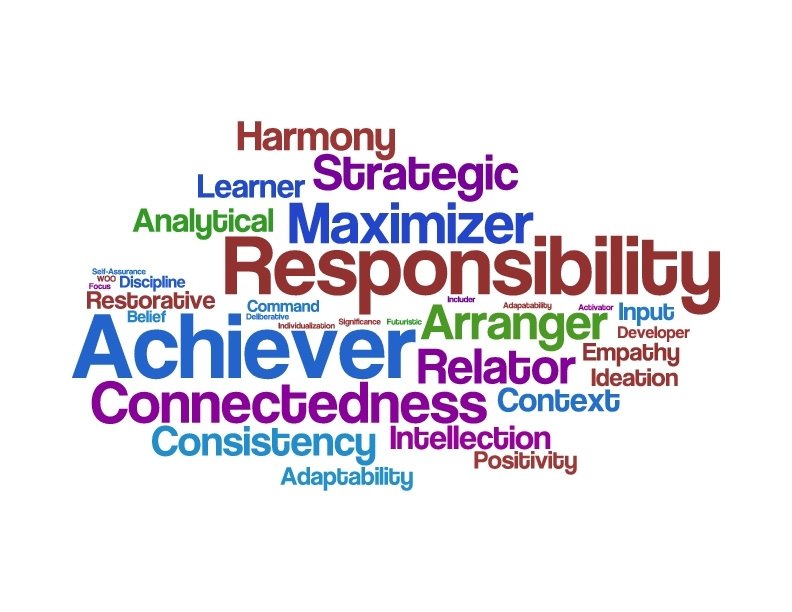I am never as frustrated in my work or in life when I have to focus on my weaknesses. I don’t thrive on being creative (painting at least) or being left alone for long periods of time. When either of these things happen, I’m usually miserable.
Often, we think we are supposed to work on our weaknesses instead of our strengths. I believe that we need to do just the opposite.
Strengths and Weaknesses
The following questions usually come up in an interview:
- Tell us your greatest traits
- Tell us your strengths
- Tell us about your weaknesses
My all-time favorite line when it comes to explaining one’s weaknesses comes from the TV show The Office. If you work in an office setting, then odds are you can resonate with the show.
In an interview for a promotion, Michael Scott is asked about his strengths. This is his response:
The desire to work on our weaknesses, I believe, comes from the idea that we can be anything we want to be. That we must improve on the areas we don’t have much talent in so that we can be well-rounded. I think we need to stop focusing on being well-rounded and start focusing on our natural talents that are our strengths.
The book, Strengths Finder 2.0, gives you an access code to complete an assessment which produces your top five themes, or strengths, out of a list of thirty-four. Obviously, this assessment does not, and cannot, take personality nuances in to consideration. However, it does take into consideration that the strengths are a list of raw talents and as you build upon them, and invest in your talents, they become your strengths.
Here five steps to assess your strengths:
1. Buy the book. Take the assessment.
I bet you don’t even know what your strengths are though. Am I right? If you don’t know, then I encourage you to spend the $15 to get the book which has the assessment code. $15 may give you a level of self-awareness you did not know was possible.
There are a few short chapters (if you can really even called them that) which introduces the premise of the book and the assessment.
The code for the assessment is in the back of the book. You should set aside 35 minutes of distraction free time to take it.
2. Review Your Strengths
Once you have taken the assessment, the program gives you a printout of your top five strengths. There are several PDF reports that are created based upon your assessment. Here is a list of the 34 themes with a brief description.
Along with these reports, the book has practical information in it, including how to get along with coworkers who have specific strengths.
3. Your Real Life
Take some time to think about how your strengths play into your real life. Not just your work life, but the things that you enjoy. The things that you are good at.
For instance, one of my strengths is Achiever. This means exactly what it says. I like to achieve things. I set goals for myself, I challenge and motivate myself. I will write down an item I have already completed on my to-do list simply so I can mark it off.
Sounds like I have a problem, right? I probably do…
4. How does your job connect with your strengths?
Now think about your strengths as it relates to your job. Do you find that you use your strengths in your job? If you struggle with your job, it may be because you are working out of your weaknesses and not your strengths. At least that is the case for me.
I’m currently in a position where I am not using my strengths. Some days I go home weary and frustrated because I am not fulfilled each day. Although I am learning valuable skills, I am not working out of my strengths.
Luckily I work in a place that had us take this assessment. The plan is to evaluate everyone’s strengths and to begin to assign tasks, when possible, to utilize their strengths.
5. Pick a Strength You Want to Improve Upon
After reviewing your five strengths, and thinking about your real life, it’s time to think about what strength you want to improve upon. For example, if one of your strengths is communication, you could figure out which form of communication you are best at and begin working on that. There are some great suggestions in the book on how to improve upon your themes.
Focus on improving your strengths. Find joy in what you are good at. Focusing on your weaknesses can be frustrating and tiresome. There is no need to drudge through life focusing on what you aren’t good at.
[bctt tweet=”Focus on improving your strengths. Find joy in what you are good at. “]
In Conclusion…
Knowing your strengths is just one step in figuring out the type of life and occupation you want. When I took the assessment for the second time, years apart, it was interesting to see the differences. As I looked back as to how my life has changed, the strengths then made more sense. Knowing your strengths is one piece of the puzzle that will give you a greater level of self-awareness to live the purposeful, prioritized life you want.
Do you know your strengths? If not, go find out!
Here’s to the Journey!



Great stuff Steph!
Thanks Jeff! Thanks for reading!
Thanks so much for sharing. I’d never heard of that book but I definitely want to read it.
Definitely check it out Juni! Thanks for reading!